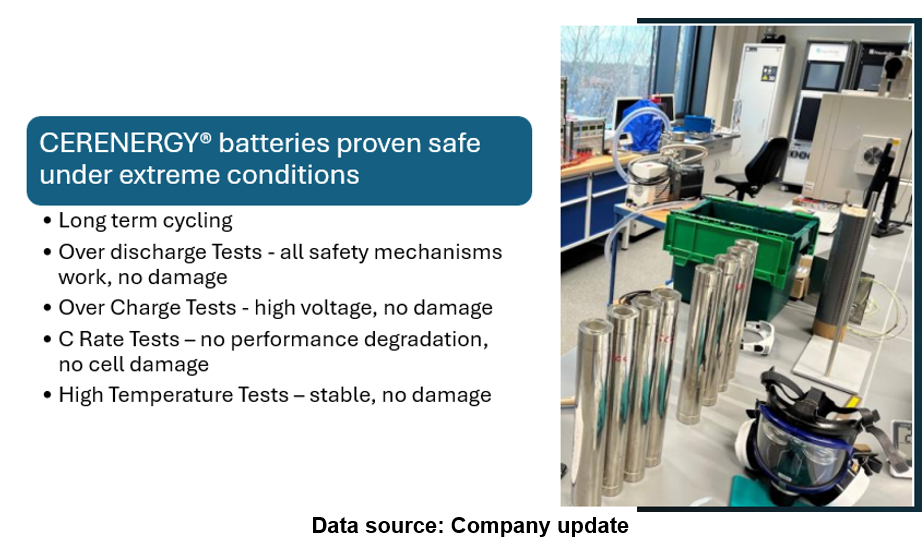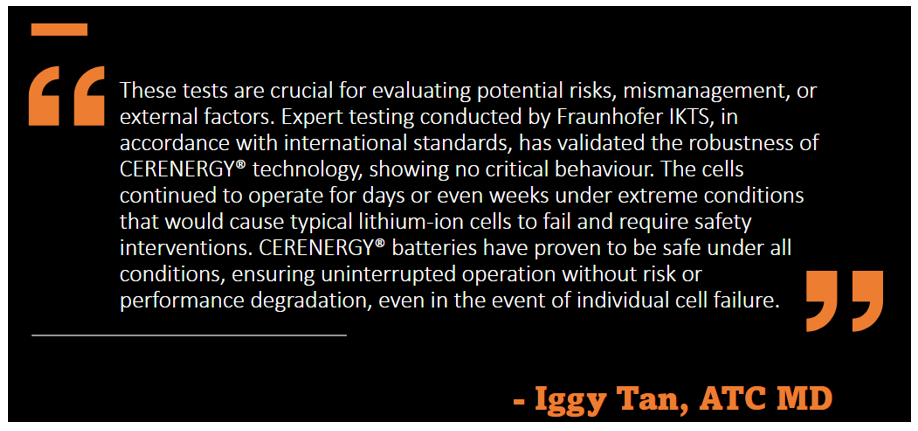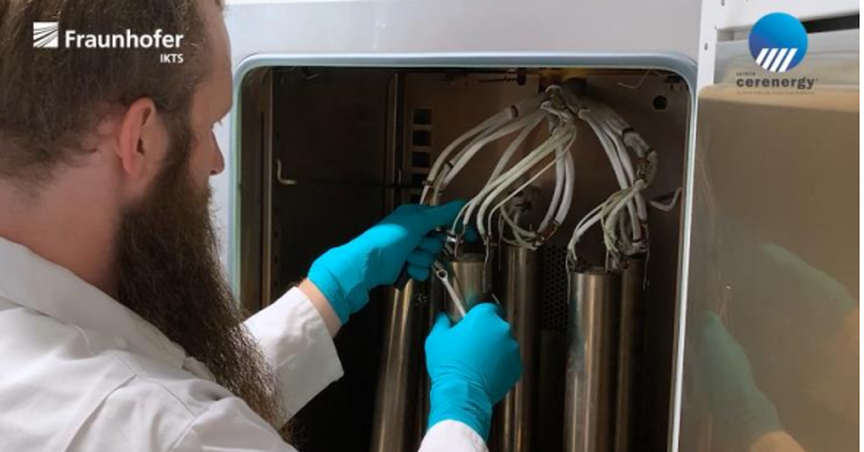Highlights
- Altech Batteries has announced positive results from CERENERGY® single-cell stress tests.
- Stress tests validated the safety and robustness of CERENERGY® battery technology.
- Battery cells showed no damage or performance degradation during overcharge, over-discharge, high-voltage, and high-temperature tests.
- The first CERENERGY® ABS60 battery prototype went online in October 2024.
Altech Batteries Limited (ASX:ATC, FRA:A3Y) has announced encouraging results from a single-cell stress-testing program conducted by its joint venture partner, Fraunhofer IKTS. The tests have confirmed the safety and operational robustness of the CERENERGY® battery technology.

In October 2024, Altech revealed that the first CERENERGY® ABS60 battery prototype went online and performed as expected.
During the first prototype production process, several individual battery cells were set aside for rigorous stress testing to evaluate their performance under extreme conditions, beyond standard operating limits. The tests aimed to assess the performance, integrity, and resilience of the CERENERGY® cells.

CERENERGY® Battery Testing Results
Long-term cycling – The test included daily charge and discharge cycles at 300°C, within a 20–100% state of charge (SoC). The results indicated that the cells are performing consistently across the full capacity range, in line with the expected scientific predictions.
Over-discharge test – The test aimed to evaluate performance at extremely low voltages (<1.7V) to assess durability under extreme conditions. Despite operating beyond standard limits, all tested cells remained fully functional, exhibiting exceptional resilience and the ability to recover without damage.
Overcharge test – The cells were subjected to a high-voltage stress of over 10V for 15 hours, which is four times their nominal voltage. The results demonstrated the battery’s integrated safety features and reported no damage even in extreme overcharging conditions.
C-rate test – This test assessed battery behaviour under different charge and discharge rates, including C/8, C/5, C/4, and C/3. CERENERGY® cells showed no performance degradation, heat buildup, or structural damage. Their ability to operate efficiently across different C-rates highlights their flexibility for a wide range of applications.
Critical operating temperatures - CERENERGY® cells were tested under extreme thermal conditions, reaching 400°C—50°C above their expected operational limit. Despite this high temperature, the cells demonstrated stable performance. Additional tests are ongoing to further examine long-term performance under elevated temperatures.
Full thermal cycle tests – In this text, cells are subjected to repeated charge-discharge cycles at 300°C while transitioning between hot (300°C) and cold (room temperature) conditions. To date, the cells have completed numerous of these thermal cycles while remaining mechanically and electrically stable.
High-temperature C-rate testing – This test was conducted at 400°C, significantly above the battery's standard operating range of below 300°C. The cells exhibited no failures during these tests, reinforcing their robustness even under extreme thermal stress. Further testing at C/2 and beyond is planned to establish the ultimate performance limits of CERENERGY® battery cells.
Cell failure test – The test aimed to determine whether an individual cell failure would disrupt the electrical current flow in the ABS60 BatteryPack. The results confirmed that the failure of one or more cells does not negatively impact overall battery functionality.
Cell circuit test - IKTS performed a short-circuit evaluation at 100% SoC, discharging the cell down to 0.2V. During this test, the current surged to 120A, simulating an extreme electrical fault scenario. Despite these conditions, the cells exhibited no leakage, gassing, or structural fractures, demonstrating their high stability and safety under severe stress.
ATC shares traded at AU$0.039 per share on 3 April 2025.



